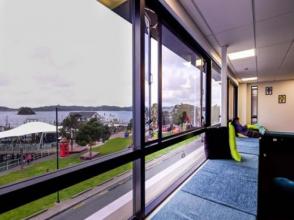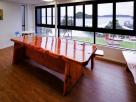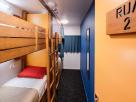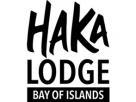Northland Hostels & Backpacker
Currently 29 hostels in this area
Filter by Location: View All , Bay of Islands (5), Northland (12), Paihia (8), Whangarei (4)
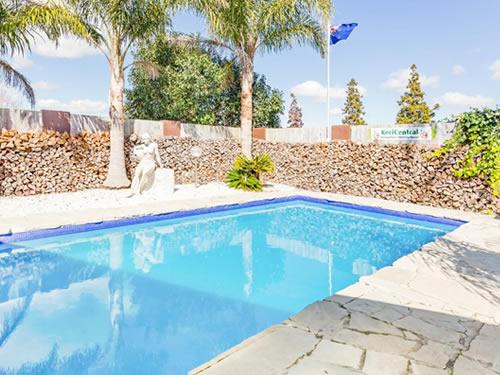
Dominated by lush forest, rolling hills and dramatic coastline, the Northland region was host to the first European settlements in what was then a colony of New South Wales, before it was annexed and became the New Zealand we know today.
The terrain and temperate climate made it ideal for the development of agriculture, but European settlers soon came into conflict with the native Maori tribes, to whom much of the land sequestered by the British and Dutch was sacred. A peace of sorts was eventually reached with the signing of the Treaty of Waitangi, named after the village near the Bay of Islands where the document was signed. The Treaty laid down the foundations of economic and social co-existence between European settler and the native Maori, and it remains an important document today, with Maori heritage and traditions being influential in forming New Zealand law and policy.
Given the history of Northland, then, traditional Maori names are prevalent throughout the region, dominating towns and infrastructure, as well as infusing the local culture. There are many unspoiled fishing villages, especially along the Waihou and Wairoa rivers, with the Maori residents still practicing traditional methods. Much of the land in Northland is protected, especially the forestry, where the Kauri tree is sacred to the Maori. Although deforestation took place during the early settlement, protected status has halted the demise. Fittingly, you will find New Zealand’s tallest tree, Tane Mauta, in the Waipoua Forest.
Northland is a popular destination for holidaying Aucklanders, drawn either to the fishing, sailing and watersports in the east at Whangarei and Bay of Islands, or the beaches and forest walks of the west coast. The tip of Northland, from Cape Regina to Ahipara, is famous for its erroneously named Ninety Mile Beach (actually only 55 miles), accessed at various points with small roads leading off Highway 1F.
Whangarei
A two hour drive from Auckland, the harbour city of Whangarei serves as Northland’s capital, and a great place to immerse yourself in the history and geography of the region. Flanked by the Pukenui and Glenbervie forests, the city was developed along the Hatea River, and was one of the first landings of James Cook’s Endeavour.
Whangarei is steeped in Maori history, as evidenced by the nomenclature of the districts and suburbs, and the area has a chequered past. European settlers were originally driven out during the Flagstaff War in the mid-1840s, and their return witnessed a gradual depletion of natural resources. Happily, transport and shipping ensured a bouyant local economy, the harbour being a crucial route for many exports.
With its favourable climate and coastal proximity, Whangarei’s other key attraction is tourism. Often referred to as “City of 100 Beaches”, the coastline remains unspoilt, and the long arc of beach at Bream Bay is a constant draw for those looking to relax in the sun. Further north lies the Tutukaka coastline where you can enjoy swimming, kayaking and paddle boarding.
It is also the place to head for if you fancy diving and snorkelling around the famous Poor Knight’s Island, with its varied and protected marine life and crystal clear waters. Even if you just fancy a couple of days walking, the Tutukaka coastline, rated by National Geographic as one of the best in the world with its spectacular cliffs and secluded bays, will keep even the most seasoned hikers entertained.
Bay Of Islands and Paihia
Rivaling Whangarei for Northland’s most popular destination is the Bay of Islands area, a further hour up Highway 1. Aptly named, the area comprises of one hundred and forty four islands, accessed from Paihia, Russell and Keri Keri, and providing a hub for watersports and fishing. Bay of Islands has its own historical significance, with Paihia being the location of the first British settlements, and the village of Waitangi hosting the signing of the eponymous treaty in 1840, which settled land disputes between the Maori and the British Crown, and which still influences law making in New Zealand today.
With its Mediterranean climate and international expats drawn by world class yachting, sailing and marine life, the Bay of Islands offers an eclectic mix of cultures, with Paihia featuring many excellent restaurants, boutique shops and bars showcasing wines from the local vineyards. Charters are available to help you explore the nearby islands, such as the famous Hole in the Rock at Piercy Island, as well as those offering dolphin spotting and mutli-day fishing trips. If you prefer to stay closer inland, there is plenty of kayaking and jet-skiing to try.
Northland
Whilst Ninety Mile Beach remains the most popular destination further up and into the Northland region, there are many charming towns and villages along the way, and well worth a visit. Mangonui is a quiet little town further up the coast, overlooking Doubtless Bay and the Karikari penninsula. Not as busy as Bay of Islands, Doubtless Bay nevertheless offers some great sailling and fishing.
Even more secluded, the village of Pukenui gives access to Rangauau Bay, where dolphins, killer whales and occasionally humpback whales can be seen. After you’ve enjoyed the coastline, the best way to experience the contrasting landscapes of Northland is to head inland to one of the many national forests. The Department of Conservation is responsible for many of these protected areas. Try the Puketi and Omahuta forests, both a short drive North East from Bay of Islands.

